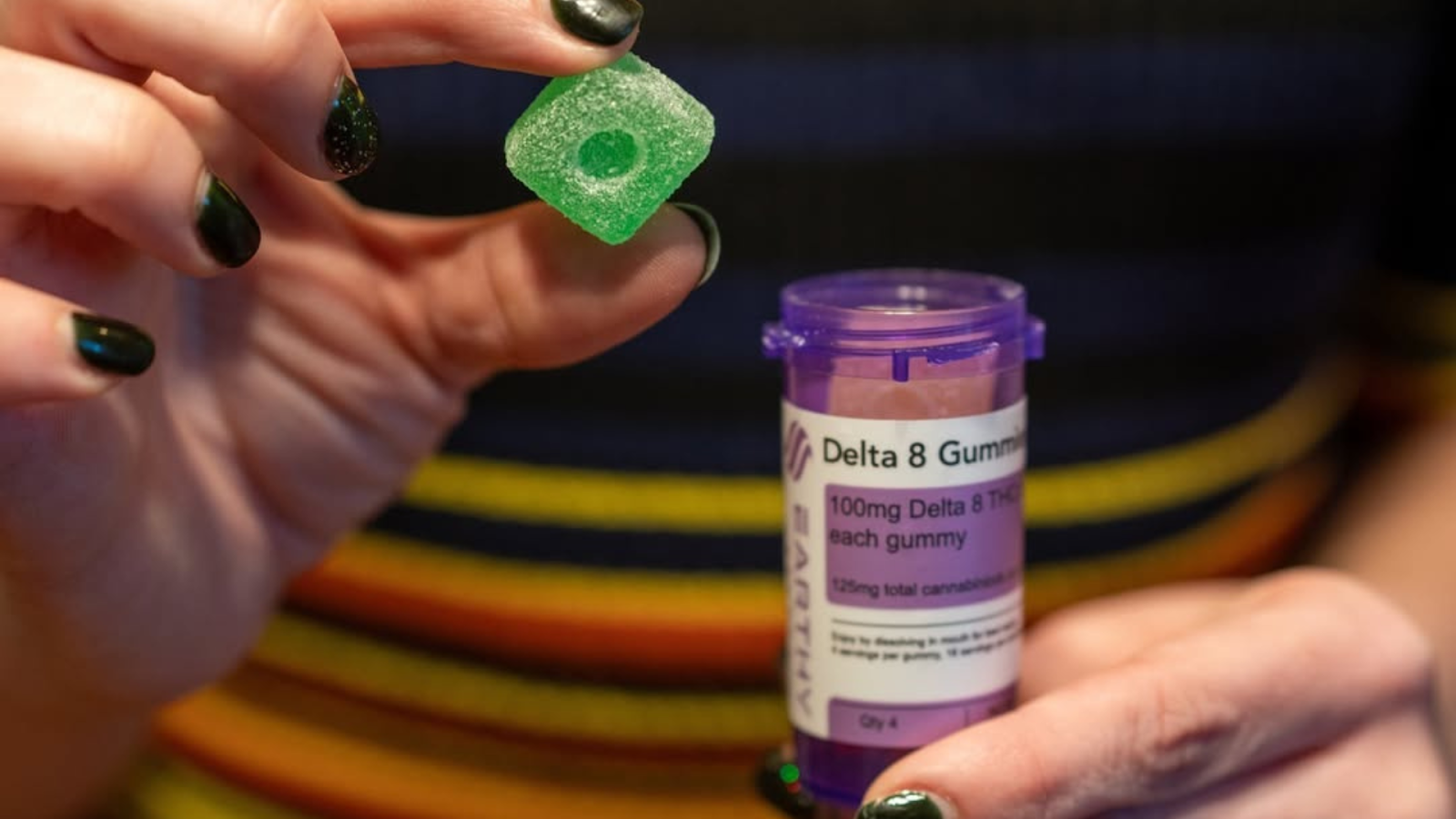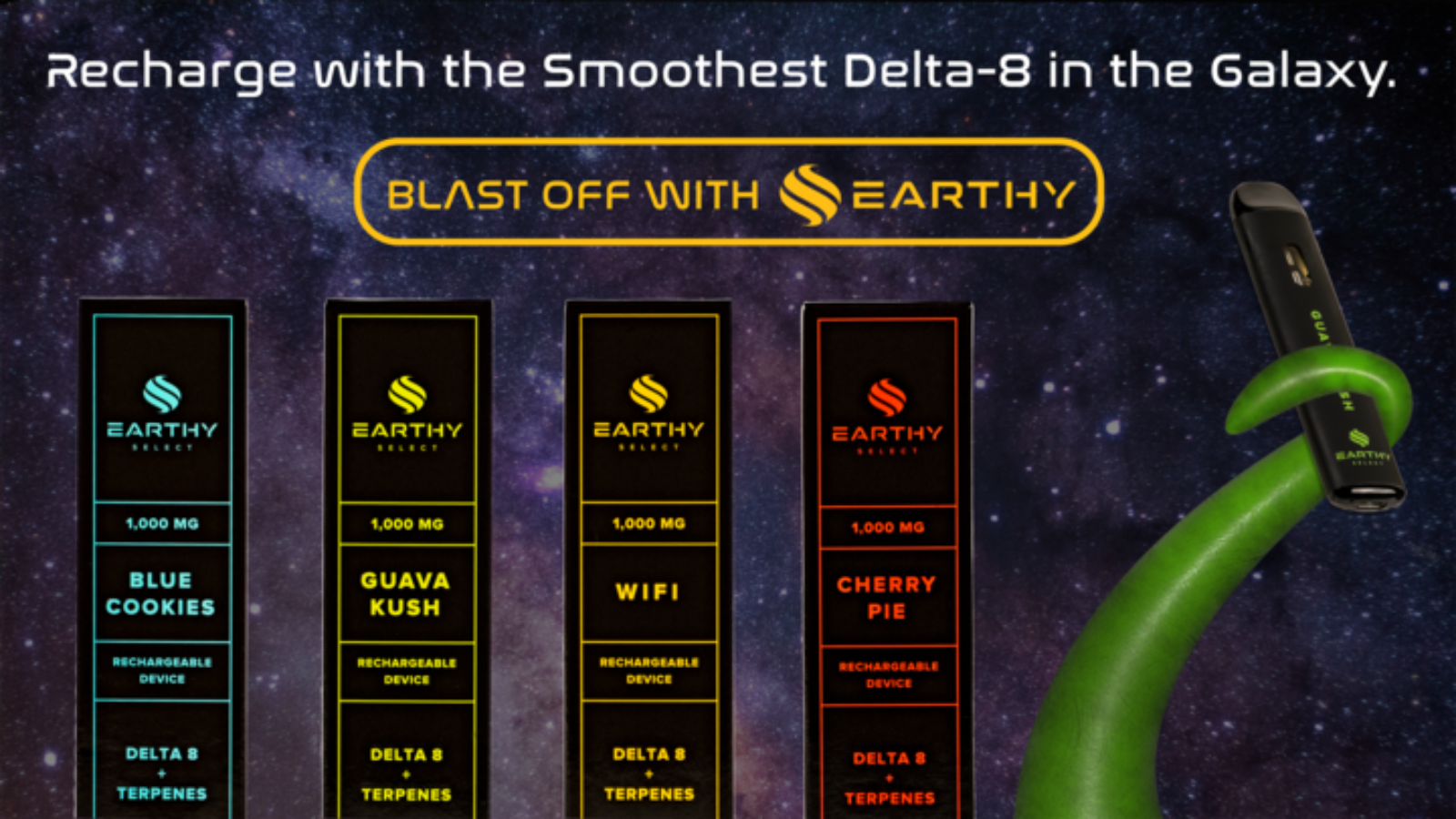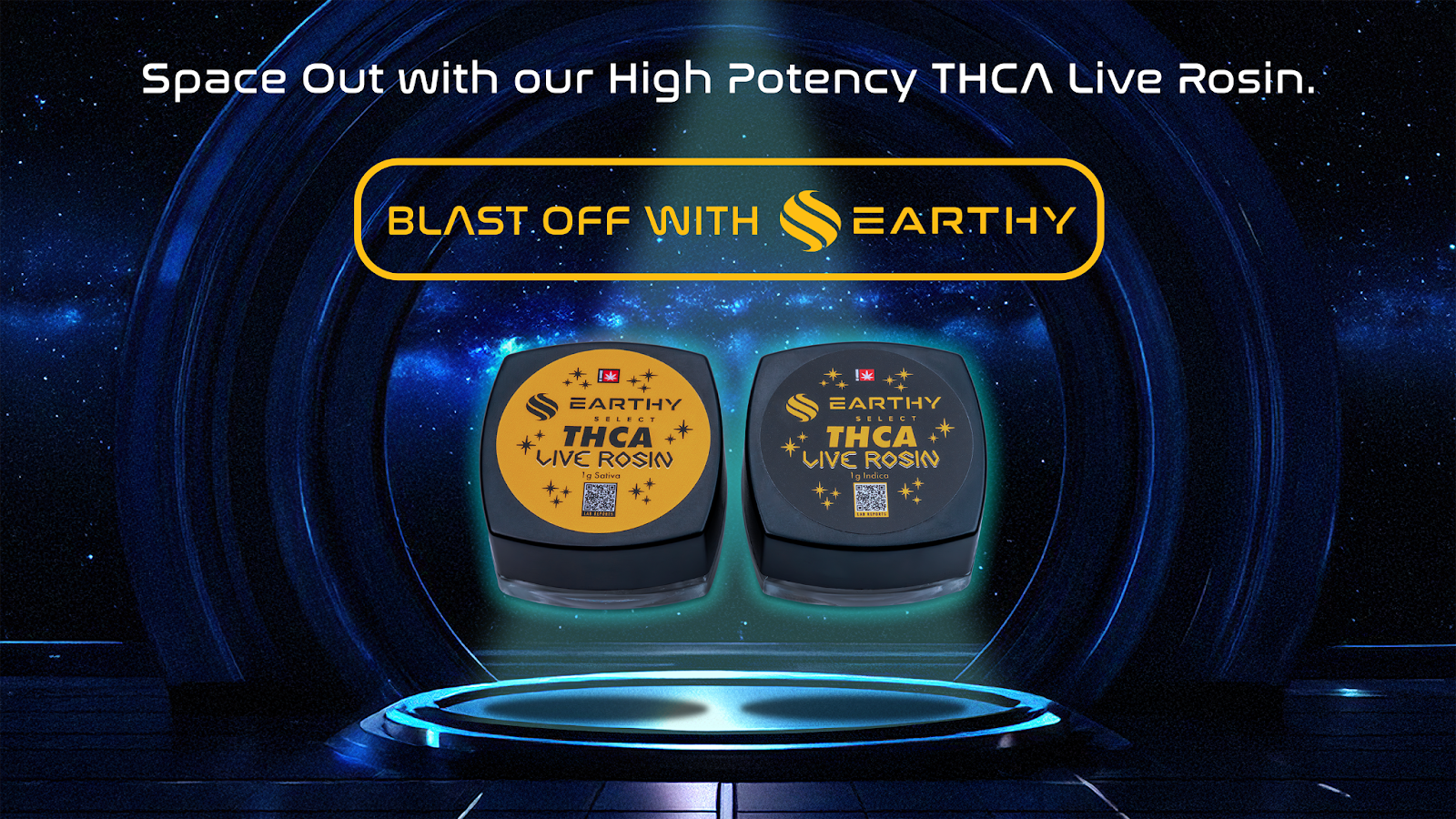Will Delta-8 THC Make You Fail A Drug Test? Here’s What You Need To Know
Key Takeaways:
- How Delta-8 Shows Up on Drug Tests: You’ll learn how Delta-8 is processed in the body and why tests detect its THC-COOH metabolites, regardless of which form of THC you’ve consumed.
- Why Consumption Methods Affect Detection Windows: Discover how products like edibles, vapes, and oils are absorbed and metabolized differently, impacting how long Delta-8 remains detectable.
- Ways to Support Natural Detox: From hydration and exercise to dosage and frequency, we’ll explore the key factors that influence how long Delta-8 stays in your system and what might help move it along faster.
Delta-8 THC is smooth and satisfying, but many people still ask the same thing before trying it: Will it show up on a drug test? With more workplaces screening for THC and more consumers exploring hemp-derived cannabinoids, that’s a fair question. This guide breaks down how Delta-8 interacts with your body and why drug tests often can’t tell it apart from Delta-9.
At Earthy Select, we’ll walk through the detection windows for common test types, explain how consumption methods can influence results, and sort fact from fiction detox myths. We believe you deserve reliable information alongside high-quality THC. That’s why we’re digging into the science behind drug testing, so you know exactly what to expect before your next test, product, or puff.
How Drug Tests Read Delta-8 THC Behind The Scenes
Before diving into how Delta-8 may show up on a test, it helps to understand how drug screenings are designed and what they actually detect. The sections below break down what standard drug tests look for, how cannabinoids are metabolized, and why those chemical similarities can create some unexpected results.
What Drug Tests Are Looking For
Most drug tests don’t go searching for THC itself. Instead, they’re built to identify what THC turns into once your body starts breaking it down. The main compound these tests flag is called THC-COOH, a non-psychoactive metabolite that sticks around long after the high fades.
Urine tests, for example, use immunoassay techniques to scan for this metabolite above a certain threshold, usually 50 nanograms per milliliter. Blood, hair, and saliva tests may rely on other methods like gas chromatography or mass spectrometry, but the end goal is the same: to detect past cannabis use by targeting residual THC byproducts.
Why Delta-8 And Delta-9 Look Nearly Identical
Delta-8 and Delta-9 THC have nearly the same chemical structure. While they differ by just one bond location, both break down into very similar metabolites. Once inside your system, Delta-8 follows the same metabolic pathways as Delta-9, producing compounds that drug tests can’t easily tell apart.
These molecular similarities are why most drug screenings treat Delta-8 and Delta-9 as interchangeable, even if the cannabinoids came from very different sources. From a lab’s perspective, the metabolites look practically identical, which means any form of THC could trigger a result.
Why Standard Tests Can’t Pinpoint The Source
Standard drug tests aren’t built to distinguish between legal and illegal sources of THC. In most cases, they’re designed for speed, simplicity, and cost-efficiency, not precision. That means even if your Delta-8 product is hemp-derived and federally compliant, the test won’t differentiate it from Delta-9 extracted from cannabis. Unless a test is highly specialized, it won’t be able to tell the difference between cannabinoid types. At the end of the day, the goal of most screenings is to confirm THC exposure, not analyze the origin story behind it.
Do Gummies, Vapes, Or Smokes Stick Around Longer?
How you consume Delta-8 plays a role in how long THC stays detectable in your body. Each delivery method (edible, inhalable, or sublingual) has a unique path through your system, affecting absorption rate, metabolite formation, and elimination time.
Behind every method lies a shared concept: half-life, or the amount of time it takes half of the cannabinoid to leave your body. For THC metabolites like THC-COOH, the half-life ranges from 5 to 13 days in regular users. However, the method of consumption can either extend or shorten this elimination process. Fast-dissolving products like Delta-8 Nano Tarts blur the line between edible and sublingual, which can affect both absorption speed and how long THC metabolites stick around.
Edibles: Slow To Start, Longer To Leave
When you consume Delta-8 in edible form, the compound is processed through your liver in what’s known as first-pass metabolism. From there, this converts THC into more potent and longer-lasting metabolites that remain in the body longer than those from other formats.
Because of this extended metabolic process, edibles typically lead to longer detection windows on drug tests. The effects might last 6–8 hours, but the metabolites can stick around for longer. If you’re enjoying products like Delta-8 Gummies (100mg), your body takes its time processing them, which means more THC-COOH ends up in your system, often for days or even weeks.
Inhalables: Fast In, Fast(er) Out
Smoking or vaping Delta-8 allows cannabinoids to enter your bloodstream almost immediately through the lungs. Since they bypass the digestive system, these methods typically lead to shorter durations and faster metabolite clearance.
The half-life of inhaled THC may still fall within the 5–13 day range for regular users, but infrequent use from fast-metabolizing formats like Delta-8 Vape Cartridges may reduce the time THC metabolites are detectable. Regardless, dosage and frequency matter, and high-potency products like Delta-8 Diamonds may enter and exit faster if you’re trying to flush your system.
For a more traditional smoking experience, Earthy Select’s Delta-8 THC Smokes combine filtered flower with consistent potency, offering a clean inhale and quick onset. While these effects wear off faster than edibles, dosage and frequency still play a key role in how long traces remain in your system.
Sublinguals And Oils: Somewhere In The Middle
Tinctures and oils follow a hybrid route: part of the Delta-8 absorbs directly into the bloodstream under your tongue, while the rest is swallowed and digested like an edible. This combination leads to a moderate onset time, and the detection window can vary depending on how much is absorbed sublingually versus digested.
For example, Delta-8 Full-Spectrum Oil could yield a shorter detection window than a gummy, but longer than a vape, especially if most of the oil is swallowed. Because sublingual products still engage the liver, the THC-COOH produced is similar to that of gummies, just in smaller quantities, depending on the dosage and method of use.
Can Delta-8 Show Up On A Drug Test?
Different drug tests look for different signals, and each one has its own timeline. Some are designed to detect recent cannabis use, while others can uncover a THC trail from weeks or even months ago. Below, we break down how each type of test works, how long Delta-8 metabolites might be detectable, and what makes each screening method unique.
Urine Tests: The Most Common Screening Method
Urine testing is the go-to choice for employers, labs, and law enforcement, and it’s built to spot THC-COOH, a metabolite that lingers in fat cells and is gradually released over time. Since Delta-8 and Delta-9 are nearly identical in structure, your body breaks them down into the same class of metabolites, making them indistinguishable to standard tests.
Detection Window:
- Occasional use: 3 to 7 days
- Regular use: Up to 30 days or longer
Because THC is fat-soluble, those with slower metabolisms, higher body fat, or heavier usage histories may retain metabolites longer. Urine tests use immunoassay methods to flag THC-COOH above a common cutoff of 50 ng/mL, though more sensitive tests may use GC-MS confirmation with tighter thresholds.
Blood Tests: Sensitive To Recent Use
Blood tests are typically reserved for post-incident screenings, medical settings, or DUI investigations, where timing matters. These tests detect active Delta-8 THC in the bloodstream along with metabolites, making them ideal for catching recent consumption, especially within a few hours post-use.
Detection Window:
- Occasional use: Up to 24–48 hours.
- Frequent use: Possibly up to 3–5 days.
Unlike urine tests, blood tests don’t rely solely on metabolite levels. They also pick up Delta-8 if it’s still circulating in your system. Because of this, blood tests are more about catching what’s active now rather than digging into your usage history.
Saliva Tests: Quick And Non-Invasive
Saliva tests are becoming more popular due to their simplicity and speed. These tests typically detect unchanged THC, including Delta-8, that’s present in your mouth and oral tissues after use. That makes them good for identifying very recent exposure.
Detection Window:
- Occasional use: Up to 24–48 hours.
- Frequent or heavy use: 72 hours or more.
Factors like how recently you used, how much you consumed, and even hydration levels can influence whether Delta-8 shows up in saliva. Because these tests don’t focus on THC-COOH, the detection window is narrower, but still worth noting if testing is imminent.
Hair Tests: The Long-Term Timeline
Hair testing has the widest detection window of all. These screenings work by detecting THC metabolites that have entered the bloodstream and been deposited into hair follicles. As hair grows, it locks in these compounds like a chemical timeline.
Detection Window:
- Up to 90 days or longer, depending on hair length.
The standard sample is 1.5 inches of hair, representing roughly three months of use. While hair tests can’t distinguish Delta-8 from Delta-9, they can reveal repeated exposure. That’s why even occasional Delta-8 users might test positive, especially if their use was consistent over time.
Clearing Delta-8 THC From Your System Faster
While there’s no instant solution, certain habits can support your body’s natural ability to process and eliminate THC metabolites. Note that these strategies won’t erase traces of Delta-8 overnight, but they may help shorten detection windows.
- Drink more water throughout the day: Staying hydrated supports kidney function and helps flush THC-COOH through urine over time. This doesn’t mean chugging gallons in one sitting, consistency matters more than volume.
- Increase physical activity: Cardio-based workouts like running or cycling can help reduce body fat, where THC metabolites are often stored. The more efficiently your body burns fat, the more likely it is to release and eliminate lingering compounds.
- Eat nutrient-dense, unprocessed foods: A diet high in leafy greens, cruciferous vegetables, and lean protein gives your liver the support it needs to metabolize THC. Avoiding sugar and greasy foods may reduce sluggishness and improve elimination speed.
- Focus on liver-supportive nutrients: Some people turn to supplements like milk thistle or dandelion root to support liver function. While research is still limited, these ingredients are commonly used in herbal detox routines and may offer an added boost when paired with other healthy habits.
- Give yourself time based on your use history: Metabolite clearance depends on factors like body fat, dosage, and frequency of use. Occasional users may process Delta-8 more quickly than daily consumers, but everyone’s timeline is different. The longer your lead time before a test, the better.
Final Thoughts
Delta-8 THC offers a smooth, legal way to enjoy cannabis, but legal doesn’t always mean undetectable. Most standard drug tests can’t tell the difference between Delta-8 and Delta-9, which means trace metabolites from either compound may still lead to a flagged result. That’s why choosing federally compliant, third-party tested products gives you more control over your experience and helps reduce unnecessary risk. Thoughtfully dosed options like our Delta-8 Tarts or Delta-8 Lozenges can offer consistency and predictability.
At Earthy Select, we take cannabis science seriously. Every product we offer is crafted for consistency, potency, and legal peace of mind because smart cannabis use starts with clear information and trusted sourcing.
Read More:
Frequently Asked Questions About Delta-8 THC And Drug Testing
How long does Delta-8 THC stay in your system?
Delta-8 THC can linger in your system anywhere from a few days to over a month, depending on various factors like frequency of use, metabolism, and body fat percentage. Generally, occasional users can expect it to clear out faster, while regular users might notice longer detection times.
Does the body metabolize Delta-8 THC the same way as Delta-9 THC?
Yes, the body metabolizes Delta-8 THC similarly to Delta-9 THC. Both compounds undergo a process in the liver involving enzymes that convert them into THC-COOH, the metabolite that standard drug tests typically detect.
Can secondhand exposure to Delta-8 THC affect drug test results?
While it’s generally unlikely, extreme levels of secondhand exposure in unventilated spaces may cause trace amounts to appear in a drug test. However, most typical scenarios of indirect exposure wouldn’t lead to a positive result.
Are there specific cutoff levels for THC on a drug test?
Yes, drug tests usually have specific cutoff levels for THC. For most urine drug tests, the threshold for THC metabolites is 50 ng/mL. Falling below this level typically results in a negative test, although this can vary between testing organizations.
Are there any detox remedies for Delta-8 THC?
Many people claim remedies like detox drinks, hydrating excessively, or using sauna sessions can help expedite the elimination of THC. However, none of these are foolproof or scientifically proven to guarantee a negative drug test result.
Can legal hemp products cause a failed drug test?
Yes, even legal hemp-derived products such as those containing Delta-8 THC can cause a positive drug test if they contain THC levels that exceed the test’s cutoff point. It’s crucial to use products from reputable brands that ensure compliance and accurate THC content.
Do different states have different laws regarding Delta-8 THC and drug testing?
Absolutely! Delta-8 THC laws and regulations vary widely from state to state. While Delta-8 is federally legal under the 2018 Farm Bill, as long as it’s derived from hemp and contains less than 0.3% Delta-9 THC, many states have created their own rules, with some banning it altogether. In addition, employer drug testing policies may still flag Delta-8 use, since most tests can’t distinguish between Delta-8 and Delta-9 THC. To avoid legal or job-related issues, it’s important to stay updated on both your state’s laws and your workplace’s policies.
Medical Disclaimer / Legal Disclaimer – Information is provided for educational purposes only. It does not, and is not intended to, constitute legal advice or medical advice. We strive to be accurate and up-to-date, but the legality of cannabinoids and the science of cannabis are continually evolving. The author is neither a legal professional nor a medical expert. Before buying or using any products, you should consult with your local authorities and medical providers.
Sources:
- Ferguson, Sian. “Does Delta-8 Show Up on a Drug Test? 12 Things to Know.” Healthline, 15 Mar. 2023, www.healthline.com/health/does-delta-8-show-up-on-a-drug-test
- Woodcock, Stacia. “Will Delta-8 THC Show Up on a Drug Test?” GoodRx, 8 Feb. 2023, https://www.goodrx.com/health-topic/cannabis/delta-8-legality-drug-tests.
- Wiginton, Keri. “Delta-8 THC: What You Need to Know About This Cannabinoid.” WebMD, 17 Aug. 2022, https://www.webmd.com/mental-health/addiction/what-is-delta-8.
- Villines, Zawn. “How Long Can You Detect Cannabis (Marijuana) in the Body?” Medical News Today, 27 Mar. 2019, https://www.medicalnewstoday.com/articles/324315.






